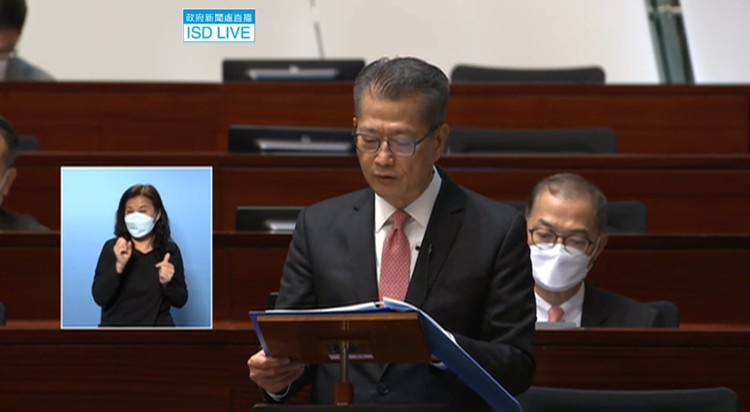- +1 929 367 8888(同台) / +1 929 356 6666(集團)
- info@multinationalholding.com
Digital currency of the central bank -- an important driver on the road of RMB internationalization
China is at the forefront of the world in the digital currency competition of the central bank. At this stage, digital RMB is mainly based on domestic retail payment, and we cannot expect it to bring a qualitative leap to the internationalization of RMB in the short term. However, this point-to-point transmission mode based on digital currency has great potential in the field of cross-border payment; It can not only improve the low efficiency, high cost and difficult supervision of cross-border payment, but also provide a relatively equal platform to promote the real-time synchronous settlement of foreign exchange transactions in multiple regions. In the era of central bank digital currency, the circulation scale of RMB will benefit from the optimization of cross-border trade and investment settlement procedures of currency, and help the internationalization of RMB.

Central bank digital currency Era
For the reasons of maintaining the stability of the financial system, assisting the implementation of monetary policy and supporting more efficient domestic and cross-border payments, the research and issuance of legal digital currency is becoming the focus of central banks in recent years. At present, many central banks around the world are accelerating the exploration of the issuance and landing of digital currencies. According to statistics, more than 60 countries have conducted experiments related to digital currency in the past year, up from more than 40 in the previous year. At present, the attitude of central banks towards digital currency is changing from caution to acceptance and exploration. The third questionnaire report of the bank for International Settlements on digital currency shows that 86% of the 65 central banks covered by the questionnaire said that they were at least considering the advantages and disadvantages of issuing digital currency, a slight increase from 80% last year.
The attitude of developed countries such as the United States, Japan and South Korea towards digital currency has gradually shifted from wait-and-see to open testing. Powell said that the Federal Reserve is participating in research and development projects related to digital dollars, and its implementation will make payment faster and more efficient, but there are still many problems to be solved in terms of technology, privacy, security and so on. In April, 2021, the Bank of Japan conducted the first phase of concept verification of the central bank's digital currency, focusing on the core basic functions such as issuance and circulation, which will last for one year. South Korea began to prepare for digital currency in early 2020, and is currently planning to conduct simulation tests on the functions of the central bank's digital currency. The British government recently said that the Ministry of Finance and the central bank will jointly establish a central bank digital currency working group to carry out research on digital currency. At present, the Bank of England is still in the initial stage of promoting digital currency. It will make a specific assessment of the scenario, risk, data and Privacy Impact of currency, so as to establish a more advanced financial service sector and promote the efficient development of digital finance. The European Central Bank recently stated that it hopes to implement the digital Euro within five years.
Developing countries are also actively deploying digital currency tests. Thailand has started the internal test of interbank digital currency in 2018. It will test retail central bank digital currency next year and plans to fully implement it in the next 3 to 5 years. South Africa is working with several central banks to study the feasibility of central bank digital currency. Venezuela announced the issuance of "petrocoins" in December 2017; In 2020, Venezuelan banks have begun to accept petrodollars, and national gas stations have used petrodollars for payment.
Developing countries and developed countries have different purposes of issuing digital currencies. In addition to the common goals of diversified competition in payment methods and improving financial stability, developing countries mostly focus on Inclusive Finance, while developed countries focus more on consolidating monetary sovereignty and the convenience of regulation and control of negative interest rates. For example, the digital dollar is intended to consolidate the international monetary status of the US dollar. According to the white paper on digital dollars, in addition to improving payment efficiency and optimizing central bank payment channels, digital dollars will also support the dollar as the world's reserve currency. At the same time, the distributed ledger Technology (DLT) highlighted therein is more likely to be applied to non US domestic users, indicating that digital dollars are more likely to be used in cross-border payment scenarios; On the other hand, for Switzerland, Japan and other countries that implement negative interest rates, the introduction of digital currency will expand the space of monetary policy, which is more conducive to the implementation and play of negative interest rate policy.
In the era of central bank digital currency, China is in the forefront of the world in the layout of digital currency. The "China financial stability report" issued by the people's Bank of China in 2020 mentioned the progress of digital RMB research and development. As one of the first central banks to launch the central bank's digital currency, the people's Bank of China has been preparing since 2014, accelerated in 2019, and entered the closed internal test stage in 2020. It has basically completed the top-level design, standard formulation, functional research and development, joint commissioning and testing, and is in a leading position in the world. As an extension of legal tender in the digital world, digital RMB is endorsed by the government credit and has unlimited legal repayment. From the perspective of operation system, digital RMB adopts a two-tier operation system, adheres to the centralized management mode, and the central bank converts money to the public through commercial banks or other operating institutions. In terms of reserve system and credit guarantee, digital RMB pays 100% reserve to ensure that the issuance and withdrawal will not affect the total amount of currency issuance.
The scale of China's digital economy has reached 35.8 trillion yuan in 2020, accounting for 36.2% of GDP. As the cornerstone of the development of digital economy, the digitalization of RMB will be the first step in the construction of digital currency in China. Unlike traditional payment methods, digital RMB uses new technologies such as blockchain to support payment scenarios and improve transaction efficiency. The current development focus of digital RMB is to serve China's huge 1.4 billion consumers, establish a solid retail payment system, and optimize the application of domestic retail payment.
In April last year, the digital RMB was first piloted in Suzhou, and now the pilot cities have been expanded to Shanghai, Shenzhen, Chengdu, Qingdao, Changsha, etc. According to the statistics of the central bank, as of August 2020, China's digital RMB pilot scenarios have covered many fields such as transportation, shopping, government services, and a total of more than 6700 pilot scenarios. 113300 personal wallets and 8859 corporate wallets have been opened respectively, with a transaction amount of more than 1.1 billion. With the gradual increase of pilot areas, we can see that the function of digital RMB as a means of retail payment and cross-border transactions begins to appear. In March, six major state-owned banks, including the postal savings bank of the China establishment of diplomatic relations between industry and agriculture, have begun to promote digital RMB wallets, and it is more convenient to apply at this stage. It can be activated only after the outlet applies and becomes a whitelist user, laying the foundation for the subsequent large-scale promotion and application normalization. In addition, its application scenarios are also gradually expanding, from offline retail channels such as subways and vending machines to online collaboration with meituan, and other platforms. Ant has also entered the pilot program. It can be seen that it is gradually infiltrating into the mobile payment industry and gradually starting to cultivate user habits, so as to facilitate large-scale coverage in the future.

Cross border payment of digital currency and internationalization of RMB
Although digital RMB has not yet planned to involve cross-border payment at this stage, with the gradual maturity and wider application of digital currency technology, the great potential of this point-to-point transmission mode in the field of cross-border payment will also be released. At present, the core of the global cross-border payment system is swift (Global Interbank Financial Telecommunication Association) and chips (New York Clearing House interbank payment system). In this payment system dominated by developed countries, developing countries have little say. Once excluded from the trading system, their cross-border trade activities will be greatly restricted. Swift is often used by developed countries as a means of financial sanctions to put pressure on other governments. Historically, the United States has imposed financial sanctions on North Korea, Russia, Iran and other countries by cutting off the swift payment and settlement channel, cutting off their financial exchanges with external banks.
The distributed payment network based on digital currency can not only improve the low efficiency, high cost and difficult supervision of cross-border payment, but also provide a relatively equal platform to promote real-time synchronous settlement of foreign exchange transactions in multiple regions. All countries have the opportunity to establish their own cross-border payment system, and countries with relatively backward development can also join the cross-border payment system established by countries with strong economic strength to form a payment alliance. At the same time, countries can also join different payment systems according to their own economic activity needs. This relatively free and open system is expected to create a fair competition environment, and the cross-border payment system monopolized by developed countries may be reshaped. Previously, the central banks of Canada and Singapore successfully completed cross-border payments on the blockchain with central bank digital currencies in the Jasper Ubin project. At present, China has launched the "multilateral central bank digital currency bridge" research project with Hong Kong, Thailand, Arabia and other regions and countries to explore the use of distributed ledgers under the blockchain to achieve all-weather synchronous settlement.
In the past few years, the RMB has made some progress on the road of internationalization. However, in terms of the amount of money used, the RMB is still far from being truly "internationalized". Since the RMB was added to the SDR basket in October 2016, more than 70 central banks or monetary authorities around the world have included the RMB into foreign exchange reserves. However, the share of RMB in the global reserve currency is only 2%, lower than 60% of the US dollar. In global cross-border payments, the use of RMB accounts for less than 2%, while the total use of US dollars and euros accounts for nearly 80%. Although China, as one of the main engines of world economic growth, has about 18% of the world's total economic output and 13% of the total import and export trade, the RMB has little impact on the global monetary system.
The distributed payment network based on digital currency can not only improve the low efficiency, high cost and difficult supervision of cross-border payment, but also provide a relatively equal platform to promote real-time synchronous settlement of foreign exchange transactions in multiple regions. All countries have the opportunity to establish their own cross-border payment system, and countries with relatively backward development can also join the cross-border payment system established by countries with strong economic strength to form a payment alliance. At the same time, countries can also join different payment systems according to their own economic activity needs. This relatively free and open system is expected to create a fair competition environment, and the cross-border payment system monopolized by developed countries may be reshaped. Previously, the central banks of Canada and Singapore successfully completed cross-border payments on the blockchain with central bank digital currencies in the Jasper Ubin project. At present, China has launched the "multilateral central bank digital currency bridge" research project with Hong Kong, Thailand, Arabia and other regions and countries to explore the use of distributed ledgers under the blockchain to achieve all-weather synchronous settlement.
In the past few years, the RMB has made some progress on the road of internationalization. However, in terms of the amount of money used, the RMB is still far from being truly "internationalized". Since the RMB was added to the SDR basket in October 2016, more than 70 central banks or monetary authorities around the world have included the RMB into foreign exchange reserves. However, the share of RMB in the global reserve currency is only 2%, lower than 60% of the US dollar. In global cross-border payments, the use of RMB accounts for less than 2%, while the total use of US dollars and euros accounts for nearly 80%. Although China, as one of the main engines of world economic growth, has about 18% of the world's total economic output and 13% of the total import and export trade, the RMB has little impact on the global monetary system.
Some people believe that the emergence of digital RMB will bring a qualitative leap to the internationalization of RMB, but the process of currency internationalization is not achieved overnight. Due to the inertia of currency use, new currencies must cross a higher threshold to become international currencies. In history, only a few currencies such as the US dollar and the euro have gained real international status. In fact, the process of RMB internationalization depends more on the choice of system and policy. Whether the currency can be "internationalized" is closely related to the size of the national economy, the volume of trade, and the degree of opening to the outside world. At the same time, currency stability is also one of the important considerations; In the period of exchange rate system reform or financial crisis, excessive fluctuation of currency value will also restrict the development of currency internationalization. Technological innovation cannot change the path of currency internationalization, but it is possible to enhance the driving force of currency internationalization.
At this stage, digital RMB is mainly used to improve the efficiency of domestic retail payment system, and cross-border payment is not the focus. Therefore, it is not reasonable for us to expect the central bank's digital currency to bring a qualitative leap to the internationalization of RMB in the short term. In the foreseeable future, the US dollar is likely to remain the main reserve currency. However, as more and more central banks issue digital currency and the application of digital legal currency in the cross-border payment system becomes more and more mature, digital RMB will facilitate the internationalization of RMB at that time. The point-to-point non intermediary trading mode of digital currency not only has the advantages of low cost and high efficiency, but also can bypass the expensive and complicated swift system, which greatly facilitates the settlement of RMB in cross-border trade and investment.
When the central bank digital currency can be widely used in cross-border payments, digital currency can catalyze the internationalization of RMB by increasing the circulation scale of money. The cross-border payment system based on legal digital currency can provide an efficient and low-cost payment system and provide transactions for the economic activities between China and its trading partners
 English ∨
English ∨
 中文
中文




